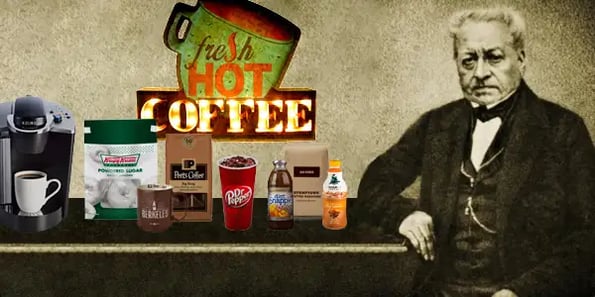Chances are, you haven’t heard of JAB Holding Company, but you’ve probably consumed their coffee products.

Fifty years ago, the privately held German conglomerate was selling chemicals for pools, resigned to a life of irrelevance. Today, they own Keurig, Peet’s Coffee, and the Dr Pepper Snapple Group — a $20B trove that has a hand in “every form and venue” of the coffee game.
How’d they get there?
JAB began in the 1820s when Johann Adam Benckiser purchased a chemical laboratory and handed the reins over to a chemist named Ludwig Reimann.
Over the next century, the lab became the world’s largest citric acid producer (one of the chemicals used to clean swimming pools and merchant ships). Then, in the 1970s, they began to morph into an investment firm…
And, starting in 2012, JAB went all-in on coffee
In recent years, JAB has quietly plunked down majority stakes in some of the biggest coffee brands in the world, including Keurig ($13.9B), Peet’s Coffee ($974m), Stumptown, Intelligentsia, and the Caribou Coffee Company.
JAB also bought out coffee-related food chains like Krispy Kreme ($1.35B) and Panera Bread ($7.5B), and put up $18.7B for soft drink giant Dr Pepper Snapple Group in a bid to bolster its distribution.
As a result, JAB now plays a role in the entire arc of an average coffee consumer’s day: Keurig K-Cups for the home, chains like Peet’s for those on the go, and cold brews from Stumptown at the grocery store.
But they’re particularly focused on one coffee trend
Ready-to-drink coffee — products sold pre-bottled, or in cans — has experienced an explosive 200% growth since 2012, compared to the 65% growth coffee chains have seen.
As millennials age, industry analysts find that the new class of coffee consumers place a premium on efficiency and convenience.
JAB has capitalized on this as they set their sights on becoming the world’s largest coffee powerhouse. And in the coming years, they just may get there: the current industry leader, Nestlé, has been through the grinder lately, reporting its “slowest sales growth in decades” last year.
